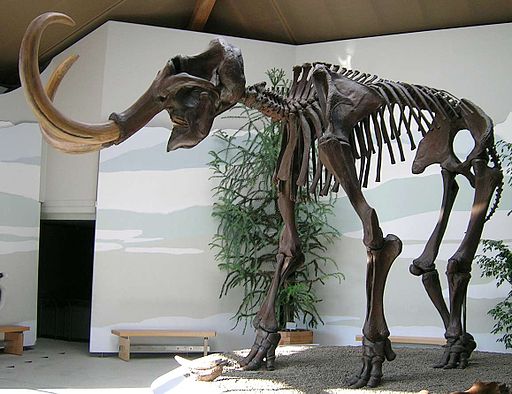You may be familiar with the large Woolly Mammoth’s (Mammuthus primigenius) from the movie Ice Age. These animals had once roamed the Earth for thousands of years, only recently going extinct at the end of the Pleistocene Period. Scientists Ben Lamm and George Church are leading the research into the second ever human provoked de-extinction, planning to release the Mammoth’s in Siberia. With an initial $15 million dollars in private funding, the team has received an additional $60 million to help achieve the 2027 deadline.
The closest living relative to these Mammoths is the Asian Elephant. Having once shared an ancestor 6 million years ago, scientists are working on pinpointing the genetic differences that set the ancient species apart from their modern (living) cousins. Fragments of Mammoth DNA have been retrieved from their ancient fossils (One of my previous blogs I wrote about DNA in fossils!), making it possible for scientists to modify the genome of an elephant to produce something that would look and act like a mammoth. The team will try to create an elephant embryo with its genome modified to resemble an ancient mammoth. To do this, the scientists will need to remove DNA from an elephant egg and replace it with the mammoth-like DNA. Some traits the Mammoth’s will need is dense hair and thick fat to withstand the cold environment. 
Some other challenges to this de-extinction process is the actual birth of a fetal Mammoth. Scientists have been able to create a sealed bag that can support a fetal lamb up to four weeks, but for the Mammoth to be successfully birthed, it will require an artificial uterus big enough to house a fetus for around two years, reaching a weight of 200 pounds (~22~ months). While this may seem like an impossible task to many, the researchers behind this operation have stated that they’re eager and confident that their expertise will prevail, showing the world that editing DNA can bring extinct species back to life.
This article connects to our most recent unit in AP Bio of genes, genetics, and DNA. As we know genes in DNA are what make each person different from the other. Physical traits are mostly represented through gene pools (genetics), such as the thicker fat needed for the mammoth to survive. DNA editing is a crucial step to bringing back this animal and the scientists are working carefully to create the closest representation of the extinct species. This goal cannot be succeeded without the things we learned in this unit!
The presence of Wooly Mammoths in todays world can help the Siberian tundra as it has been overruled by moss. The moss acts as an insulator for the permafrost soil from the cold temperatures, thus melting the permafrost and releasing harmful gasses such as methane and Co2 into the atmosphere. Mammoths are considered “ecosystem engineers” because they feed on the moss and provide a natural fertilizer with their waste. With the moss being broken up, it would allow the grasslands to come back which keep the soil from eroding and melting. Ecologists have imported bison into the tundra in an attempt to help the tundra return to grasslands, but they believe the Mammoth’s will be much more effective.
While the team is multiple steps away, facing many challenges not yet conquered, they are continuing to push on with their research, inching closer and closer to making this reality. If this mission is a success, it will open the door to numerous DNA editing opportunities, restoration of the Siberian Tundra, and will remain a great feat of human advancement.



Leave a Reply